Glassy, tired eyes, red cheeks and a hot forehead: fever is not uncommon in a baby, as the still untrained immune system has to fight off numerous pathogens.
Small children have a fever much faster and in a different way than adolescents or even adults. The body temperature quickly rises to 39 or even 40 degrees Celsius, which is basically a good sign in children: After all, the body is defending itself against viruses and bacteria, which can hardly multiply at such temperatures.
A Fever In A Baby Is A Healthy Physical Reaction To Pathogens
A fever in a baby is normally not a dangerous disease, but a normal and healthy reaction of the little body to pathogens. For this reason, you should not immediately reach for the fever suppository, but first rely on a lot of rest and drinking.
In addition, a visit to the pediatrician is important to find out the cause of the fever and to treat it. After all, fever is not the cause of the disease, but only a symptom.
How to measure your child’s body temperature correctly, when and how to treat a fever in a baby, and what else you should pay attention to with feverish children, you will learn in this detailed article.
Do not be afraid of fever in your baby, because an increased body temperature helps your child to recover quickly.The body temperature in healthy children is between 36.5 and 37.5 degrees Celsius.
If the temperature increases, the body reacts to an infection and tries to fight viruses and bacteria on its own. Basically, this is a clever reaction of nature, because pathogens multiply less easily at temperatures above 38.5 degrees Celsius and are thus more easily kept in check.
Thus, fever is not a disease, but merely a protective reaction of the body against a wide variety of pathogens.
Table of contents
Babies Have A Fever Faster Than Adults
Young children are born with an immature immune system. While breastfed infants receive many antibodies against diseases they have already experienced through their mother’s milk and therefore become ill less often, the bodies of older children have to cope with numerous pathogens on their own.
This happens primarily through an increase in body temperature, which can rise very high very quickly. Temperatures between 39 and 40 degrees Celsius are not uncommon in childhood, even with infectious diseases that are harmless in themselves, and are therefore no cause for concern.
As soon as the child’s immune system is more trained and has developed antibodies against the most common pathogens, febrile phases of illness occur less frequently.
From When Does One Have A Fever?
When one has a fever or when the body temperature is merely considered elevated is precisely regulated in the medical guidelines. The following table gives you a precise overview of when a fever begins for a baby – because different limits apply to them and adults respectively.
After all, small children fever faster and also higher than older or adults.
| Normal temperature. | 36.5 to 37.4 degrees Celsius. |
| Elevated temperature. | 37.5 to 38.4 degrees Celsius. |
| Fever. | 38.5 to 38.9 degrees Celsius. |
| High fever. | 39 to 40 degrees Celsius. |
| Hyperthermia. | from 41 degrees Celsius. |
A merely elevated body temperature in babies and small children does not necessarily indicate an infection, but can also simply be a sign of overheating.
This occurs, for example, when the child is dressed too warmly, has just been running around or crying. It usually goes down on its own.
Is A Fever Dangerous For The Baby?
Earlier medical guidelines stipulated that an elevated temperature must always be lowered as a symptom of illness. Nowadays, pediatricians have a different view of the febrile response of the child’s body and value it as desirable.
Accordingly, higher body temperatures are not considered dangerous per se as long as they do not exceed 39 degrees Celsius. Above this limit, however, the high temperature represents a burden for the child’s organism and can severely impair important functions of the body.
However, a fever in a baby is not dangerous in the sense of “life-threatening” even if it exceeds 39 degrees Celsius, but in this case, you must definitely take your child to the pediatrician and find out the cause of the increased temperature.
By the way, not only a high temperature must be an alarm sign: Especially in young infants, the fever mechanism often still fails or does not function properly, so that children can be sick and require treatment despite being fever-free.
Therefore, look out for typical symptoms of illness in your baby, such as.
- Difficulty breathing.
- Cough.
- An unhealthy-looking complexion.
- Apathy, listlessness.
- Quenchiness, restlessness, tearfulness.
- Refusal to eat or drink.
Etc. and see a pediatrician immediately.
What Is Chills And What Helps?
The hypothalamus, an important control unit in the human brain, acts as a control center and ensures that the healthy body temperature of 37 degrees Celsius on average is maintained.
If, on the other hand, the body is flooded with certain disease-indicating messenger substances, it perceives the normal temperature setting as too cold and reacts with shivering.
In this case, the muscles tremble so strongly that the temperature of the body increases as quickly as possible. As an unpleasant side effect, we seem to freeze during this process. Chills often occur as a result of an infection, but can also be attributed to sunstroke or heat stroke.
If your child suffers from chills due to a cold or similar, these immediate measures will help:
- Wrap the child warmly in a cozy blanket.
- Let him drink a lot.
- Do not lower feverish temperatures until the muscle shivering has stopped.
- Lukewarm calf compresses help well afterwards.
However, if your child is shivering because he or she has been in the blazing sun too long in the summer, get him or her to a shady, cool place immediately and cool the hot head with wet, cool towels.
In case of sunstroke or heat stroke, be sure to notify a doctor.
What Are The Causes Of Fever In Babies?
A fever in a baby or toddler can usually be traced back to infectious diseases that are commonin childhood:
- Colds
- Middle ear infections.
- Throat infections.
- Tonsillitis.
- Bronchitis.
- Gastrointestinal infection.
Typical childhood illnesses such as 3-day fever, scarlet fever, or hand-foot-and-mouth disease can also cause a rise in body temperature. Some of these infections show very typical fever curves, which is why regularly taking and writing down the temperature is so important for accurate diagnosis.
In turn, many childhood illnesses are accompanied by other characteristic features, such as a skin rash, which is why the pediatrician can usually quickly find out the cause of the increased temperature and treat it.
Sometimes, however, the reason for the baby’s fever is not immediately obvious, for example, because the temperature has risen early in the illness and other symptoms only appear later in the course of the illness.
If your pediatrician does not find a cause for the fever, he or she will probably order a urine test to rule out an infection of the urinary tract. If serious infections or more severe courses of illness are suspected, further diagnostic tests will follow, such as a blood sample, x-rays (e.g., if pneumonia is suspected), etc.
My Baby Is Feverish Without Any Other Symptoms, Is This Normal?
If, despite all efforts, the cause of the elevated temperature cannot be found, diseases such as:
- Appendicitis.
- Meningitis (inflammation of the brain).
- Blood poisoning (sepsis).
- Or types of cancer such as leukemia.
may be behind it. Therefore, apparently causeless fever in a baby or young child must always be carefully clarified. Fortunately, however, such diseases are very rare, which is why seemingly causeless elevated temperature can usually be traced back to them:
- Lack of fluids.
- Allergic reaction.
- Reaction to a vaccination.
What Is 3-day Fever And What Can Be Done About It?
Almost all children go through the 3-day fever (also spelled “three-day fever”) once by the end of the third year of life. This is a harmless childhood illness caused by a herpes virus that takes a characteristic course.
The disease begins with a sudden and seemingly unprovoked high fever of more than 39 degrees Celsius. The fever in the baby lasts for about three to a maximum of four days, only to disappear just as suddenly.
Instead, a rash consisting of small, pale red spots now spreads on the child’s chest and back, which in turn fades after about three days. The pediatrician usually orders symptomatic treatment with fever reducers and plenty of rest.
After about a week, the disease is over and the child has acquired lifelong immunity.
How To Measure Body Temperature Correctly
In the case of a febrile illness, it is very important to take the temperature regularly, as the progression curve provides the pediatrician with valuable information about the cause and severity of the illness.
Therefore, take the temperature regularly (for example, in the morning, at noon, in the afternoon and before going to bed) and write down the values.
Various thermometers are commercially available, but not all of them are equally suitable. The most accurate results are provided by simple, digital clinical thermometers, with which you can measure the body temperature rectally.
And this is how the measurement works:
- Place your child backwards on the changing table and hold his legs up.
- Alternatively, you can lay him on his side with his legs up or on his stomach, for example on your lap.
- Dip the tip of the thermometer in white Vaseline or wound cream.
- Now insert the tip of the thermometer carefully and no more than two centimeters deep into the anus.
- Wait until the signal for the finished measurement sounds.
- Pull the thermometer out slowly and carefully and read the temperature.
Of course, most children find this way of taking temperature uncomfortable, so parents look for alternatives. Avoid measuring under the tongue or under the armpits, especially with young children – these provide very inaccurate results. Ear or forehead thermometers, on the other hand, are more suitable.
Using Ear Or Forehead Thermometers Correctly
For various reasons, ear or forehead thermometers provide only inaccurate results, which is why rectal measurement is always preferable. However, if your child is too resistant, has outgrown the baby’s age, or is sleeping, these devices are a suitable alternative.
In order to get the most correct value possible, please follow these instructions when using the device:
- Measure with the ear thermometer in both ears if possible.
- Place the forehead thermometer at the temples and not on the forehead.
- Always measure several times.
- If the results differ greatly, record the highest one.
Above all, make sure that drafts do not falsify the results during the measurement.
What Can I Do Against Fever In Babies?
If your child has a fever, the first thing he or she needs is.
- Plenty of rest, preferably bed or couch rest.
- Plenty to drink so that his body does not dry out.
- Lukewarm tea or still water are best for this purpose.
- Easily digestible food.
Don’t wrap your child up too warm, otherwise, he will only overheat even more and his body temperature will rise. For relief, place lukewarm, damp washcloths on your child’s forehead; if the fever is high, you can also lower it with calf wraps.
Only in case of shivering you must not use calf compresses, but wait until the muscle trembling has stopped.
Children with fever should not be bathed but at most given a brief lukewarm shower. A longer walk in the fresh air is also not advisable with fever, as this can also increase the body temperature.
If you still want or need to go out: wrap your child up warmly, let it lie or sit in the stroller if possible and do not stay outside for more than half an hour.
You do not need to give fever-reducing suppositories or fever juices if the temperature is only elevated. Only if the baby’s fever rises to more than 39 degrees Celsius or your child looks tired do you need to administer the appropriate medication. Give your child only antipyretics suitable for his again the appropriate dose and do not exceed the recommended daily dose.
Common antipyretics for children are mainly ibuprofen or paracetamol, which you can give alternately in case of very high fever in the baby and with the agreement of the pediatrician. Acetylsalicylic acid (as in ASA or Aspirin), on the other hand, is not suitable for children and should never be given to them. The same applies to antipyretics for adults.
When Should You Take A Feverish Baby To The Doctor?
With a young infant, you should go to the pediatrician when the temperature is 38 degrees Celsius or higher, or when there is no fever if there are general signs of illness or malaise. If the baby’s fever lasts longer than one day, you should definitely present him to the pediatrician.
Otherwise, a visit to the doctor is indicated if one or more of the following signs apply:
- Fever lasts longer than three days in older children.
- Temperature does not drop despite calf compresses and / or suppositories.
- Other signs of illness such as cough, abdominal pain, vomiting, diarrhea, skin rash, etc. occur.
- Child appears impaired, is fatigued, tired, apathetic.
- Child does not want to eat and/or drink.
In case of febrile seizure, please call the emergency service immediately! A visit to the emergency service is also indicated if the feverish child screams shrilly, reacts sensitively to touch, shows neck stiffness, or generally appears seriously ill to you.


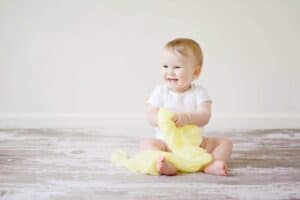
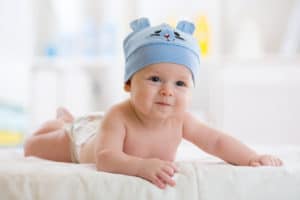
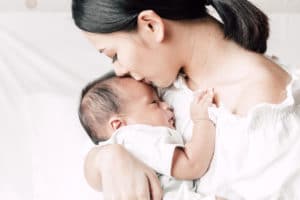
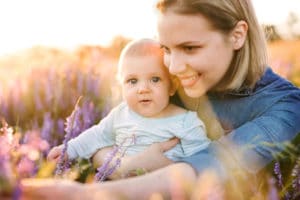
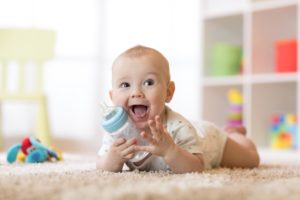
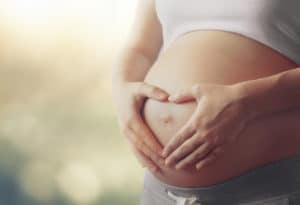

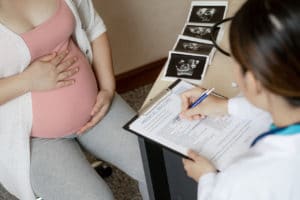

4 thoughts on “Fever In The Baby: How To Help Get Better”